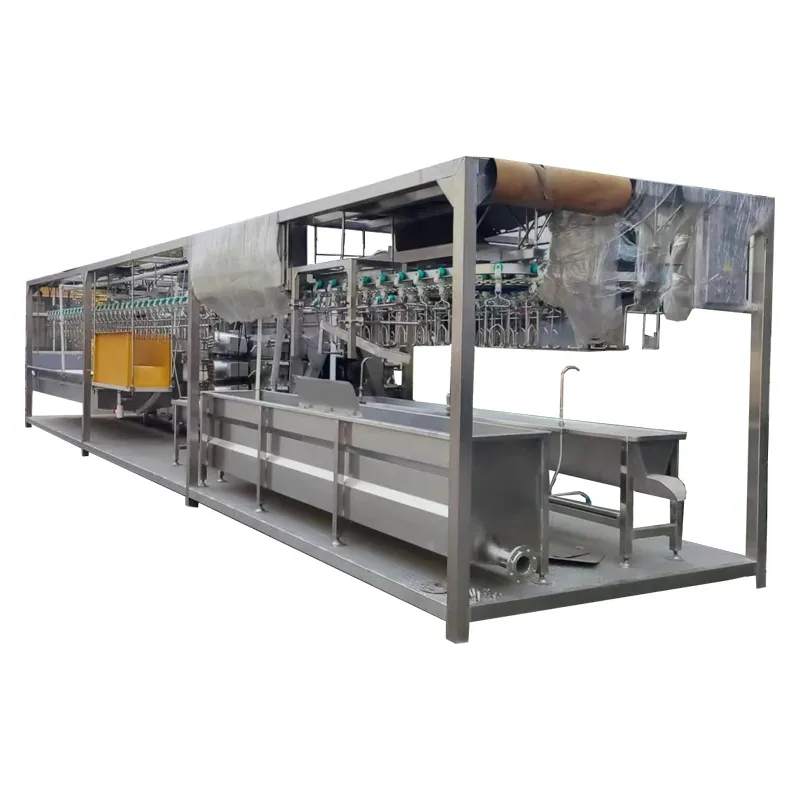belt driven exhaust fan
Oct . 14, 2024 06:33 Back to list
belt driven exhaust fan
Understanding Belt-Driven Exhaust Fans A Comprehensive Overview
In today's industrial landscape, efficiency and effectiveness in ventilation systems are paramount. Among various types of exhaust fans, belt-driven exhaust fans stand out due to their unique features and benefits. This article delves into the intricacies of belt-driven exhaust fans, discussing their design, advantages, applications, and maintenance.
What is a Belt-Driven Exhaust Fan?
A belt-driven exhaust fan is a mechanical device that utilizes a belt and pulley system to transfer power from a motor to the fan blades. This configuration allows for greater flexibility in fan design, enabling the motor to be located away from the fan itself. Unlike direct-drive fans, which connect the motor directly to the fan blade, belt-driven systems can offer a range of operational speeds and torque adjustments.
Design and Components
The fundamental design of a belt-driven exhaust fan consists of several critical components
1. Motor The motor serves as the source of power. In belt-driven systems, it is usually mounted separately, providing accessibility for maintenance.
2. Belt and Pulley System The belt connects the motor to the fan’s pulley. This system can include multiple pulleys, allowing different gear ratios and rotational speeds.
3. Fan Blade Assembly The fan blades are crafted to optimize airflow and efficiency. Depending on the intended application, the size, shape, and material of the blades can vary significantly.
4. Housing The housing encases the fan assembly, ensuring that air is directed towards the intended exhaust point while minimizing noise and vibration.
5. Inlet and Outlet Grills These components help control airflow into and out of the fan, contributing to overall efficiency.
Advantages of Belt-Driven Exhaust Fans
Belt-driven exhaust fans offer several advantages
belt driven exhaust fan

1. Flexibility in Design The ability to mount the motor separately allows for more compact fan designs and can lead to space savings in crowded environments. It also provides the opportunity for easily adjusting the fan speed by changing the pulleys.
2. Reduced Wear on Motor Since the motor operates at a lower RPM compared to direct-drive systems, it experiences less wear and tear, resulting in a longer operational lifespan.
3. Versatility Belt-driven exhaust fans can handle diverse applications, ranging from industrial ventilation in factories to fume extraction in laboratories. Their ability to adjust airflow and pressure makes them suitable for varying requirements.
4. Enhanced Performance The belt and pulley system allows for better torque transmission, which can improve airflow efficiency. This is crucial in applications where high volumes of air need to be moved effectively.
5. Noise Reduction Due to the motor being positioned away from the fan blades, belt-driven systems can operate more quietly, making them favorable in noise-sensitive environments.
Applications of Belt-Driven Exhaust Fans
Belt-driven exhaust fans are utilized across various sectors, including
- Industrial Facilities Manufacturing plants often require robust ventilation solutions to remove heat, dust, and fumes. - Commercial Kitchens These fans are essential for removing smoke and odors from cooking areas. - Agricultural Settings In livestock barns and greenhouses, ventilation fans help maintain temperature and air quality. - Laboratories Ensuring proper ventilation to handle hazardous materials is crucial for safety in research facilities.
Maintenance Considerations
To ensure optimal performance and longevity, regular maintenance of belt-driven exhaust fans is essential. Key maintenance tasks include
- Belt Inspection Regularly check the tension and condition of the belts. Worn or damaged belts should be replaced promptly to avoid operational issues. - Lubrication Keeping bearings and moving parts lubricated can reduce friction and prevent overheating. - Cleaning Dust and debris can accumulate on fan blades and housing. Routine cleaning enhances airflow efficiency and lowers energy consumption. - Motor Checks The motor should be inspected for signs of wear or electrical issues, ensuring it operates smoothly and effectively.
Conclusion
Belt-driven exhaust fans play a crucial role in a multitude of applications, offering flexibility, efficiency, and reliability. Their design allows for superior performance, making them a preferred choice in various industries. By understanding their features and ensuring regular maintenance, users can maximize the benefits of these essential ventilation devices. Whether in an industrial setup or a commercial kitchen, belt-driven exhaust fans are indispensable for creating a safer and more comfortable working environment.
-
Hot Sale 24 & 18 Door Rabbit Cages - Premium Breeding Solutions
NewsJul.25,2025
-
Automatic Feeding Line System Pan Feeder Nipple Drinker - Anping County Yize Metal Products Co., Ltd.
NewsJul.21,2025
-
Automatic Feeding Line System Pan Feeder Nipple Drinker - Anping County Yize Metal Products Co., Ltd.
NewsJul.21,2025
-
Automatic Feeding Line System - Anping Yize | Precision & Nipple
NewsJul.21,2025
-
Automatic Feeding Line System - Anping Yize | Precision & Nipple
NewsJul.21,2025
-
Automatic Feeding Line System-Anping County Yize Metal Products Co., Ltd.|Efficient Feed Distribution&Customized Animal Farming Solutions
NewsJul.21,2025






